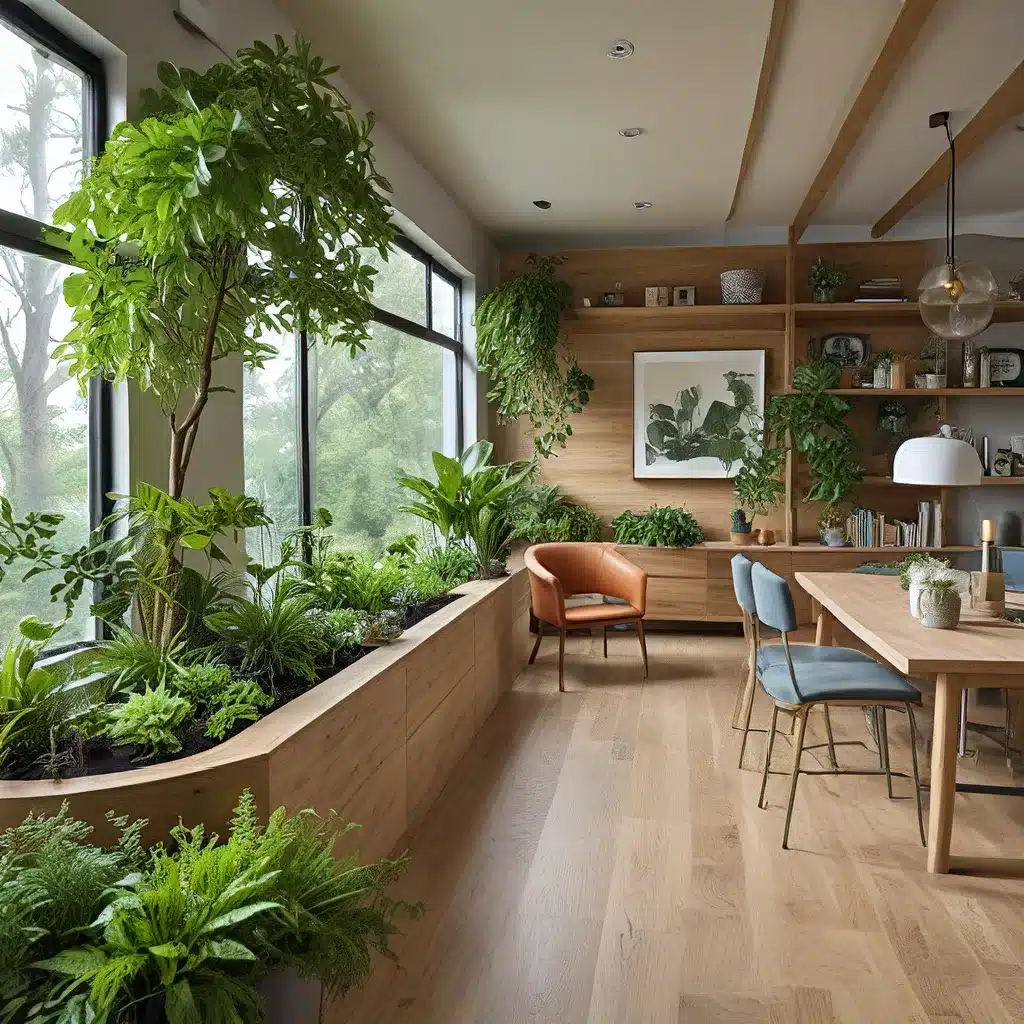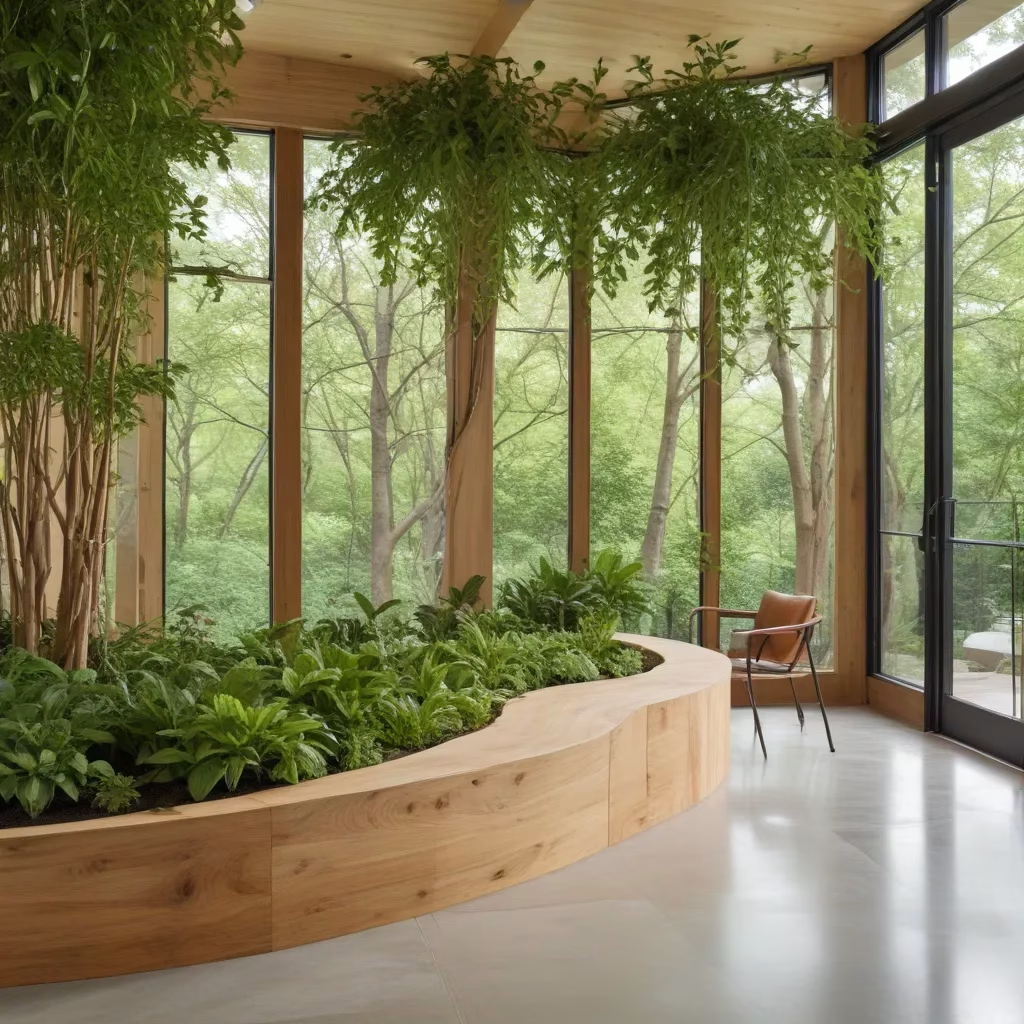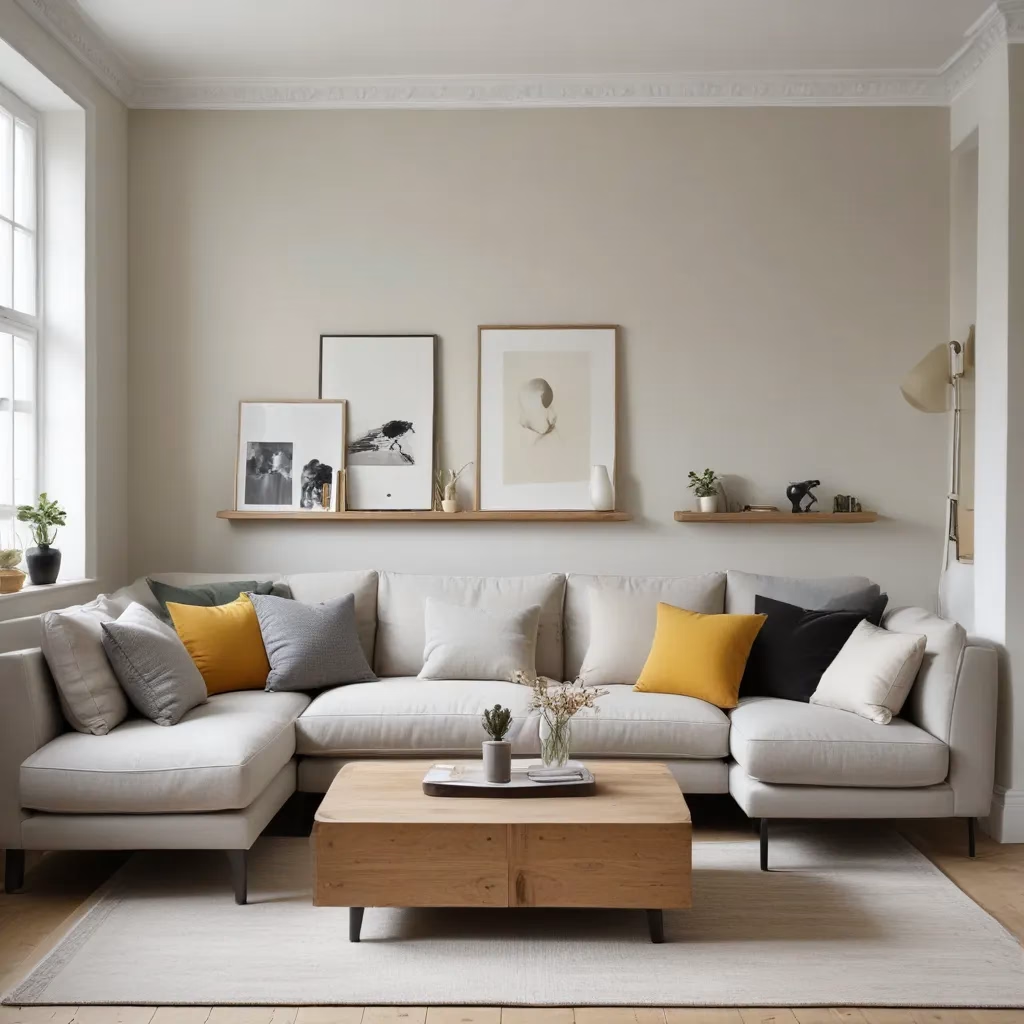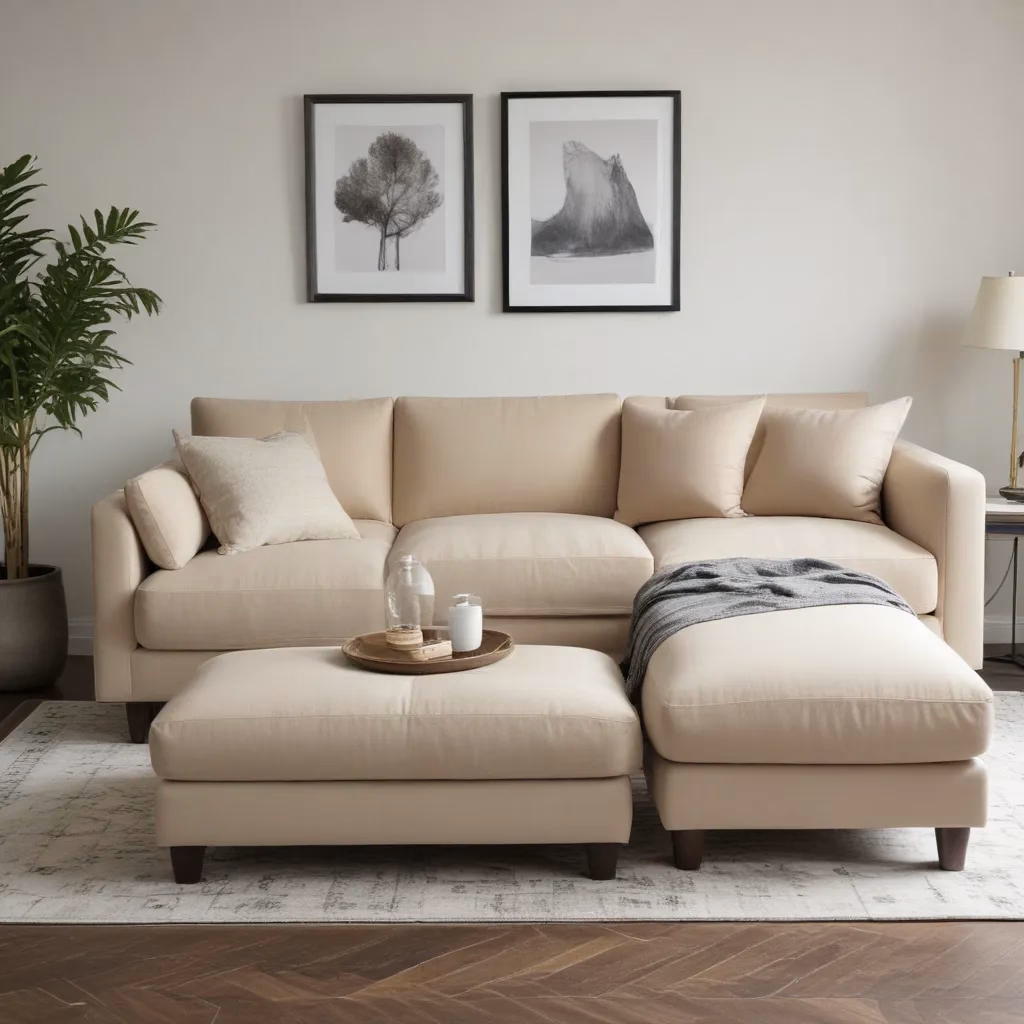
Reconnecting with Nature for a Balanced Lifestyle
As someone who has always been drawn to the beauty and tranquility of the natural world, I’ve been on a mission to incorporate more of that essence into my living space. And let me tell you, the transformation has been nothing short of remarkable.
Biophilic design – the concept of bringing nature indoors – has become my guiding principle, and it’s been a game-changer for my overall well-being. By strategically incorporating elements like plants, natural materials, and subtle nods to the outdoors, I’ve created a haven that not only looks stunning but also positively impacts my physical, emotional, and mental health.
You see, we humans are inherently wired to thrive when we’re connected to the natural environment. It’s in our very DNA to crave that sense of harmony and balance that comes from being immersed in the beauty of the great outdoors. And when we can’t physically escape to wide open spaces, bringing those natural elements into our homes is the next best thing.
The Power of Houseplants
One of the easiest and most impactful ways to embrace biophilic design is by introducing more houseplants into your living spaces. These living, breathing companions not only enhance the aesthetic appeal of a room but also work tirelessly to improve air quality, reduce stress, and foster a deeper connection to the natural world.
As the experts at Gardening Know How explain, “Houseplants function as living breathing companions within indoor spaces. With every breath, houseplants improve air quality in homes by filtering out pollutants and increasing oxygen levels.”
I’ve found that strategically placing a variety of plants throughout my home – from the sunny living room to the cozy bedroom – has had a transformative effect. Not only do I feel more relaxed and grounded, but I also find myself spending more time tending to my indoor garden, a practice that has become a soothing form of self-care.
And the beauty of houseplants is that you don’t need a green thumb to enjoy their benefits. Some of the most low-maintenance, easy-care options include spider plants, aloe vera, air plants, and cacti. These hardy varieties thrive with minimal effort, making them perfect for even the busiest of lifestyles.
Elevating Your Space with Vertical Interest
Beyond the traditional placement of plants on windowsills and shelves, I’ve discovered the joys of incorporating hanging and trailing varieties into my biophilic design. As Mia Roettger, an interior designer with a focus on biophilic design, explains, “Hanging plants bring a diverse range of design options and aesthetic charm to your home. Their length and hanging opportunity add vertical interest to the design aesthetic of a home, drawing the eye in a new direction that is otherwise a horizontal frame.”
I’ve found that adding cascading plants like burro’s tail, English ivy, and string of pearls to my home has created a truly captivating and serene atmosphere. The delicate, trailing foliage softens the hard lines of furniture and architecture, while also drawing the eye upward, creating a sense of depth and dimensionality.
And the best part? These hanging beauties don’t just look stunning – they also provide all the same air-purifying and mood-boosting benefits as their earthbound counterparts. It’s a win-win for both the aesthetic and the health of my home.
Bringing the Outdoors In
Of course, connecting to nature indoors is about more than just adding greenery. It’s about creating a cohesive, harmonious environment that seamlessly blends the natural and the man-made.
As the team at Gardening Know How suggests, “Unless you are building or remodeling, you can’t change the position of windows, but you can be clever about highlighting views that link to the natural landscape.” By strategically framing the outdoor scenery – be it a lush garden, a glimpse of treetops, or even a simple patch of sky – I’ve been able to forge a stronger bond between my living space and the natural world beyond.
And for those of us without picturesque views, there are still plenty of ways to harness the power of biophilic design. Incorporating natural materials like wood, stone, and natural fibers can create a grounding, earthy feel. Choosing neutral-toned window frames and sills helps to blur the line between inside and out. Even minimalist window treatments can enhance that sense of openness and connection.
Growing Your Own Green Oasis
One of the most rewarding aspects of my biophilic design journey has been the opportunity to cultivate my own miniature indoor gardens. From windowsill herb planters to self-sustaining terrariums, these small-scale growing projects have allowed me to engage with nature in a hands-on, tangible way.
As Mitch Meiners, a biophile and manager of the Caine Conservatory, explains, “Indoor gardening allows us to connect to sustainable and self-sufficient practices without the restraint of land capacity. Tending to indoor crops provides a tangible physical connection to the food we eat in turn fostering a deeper understanding of plant life cycles and appreciation for the resources the Earth provides.”
I’ve been amazed by the sense of wonder and fulfillment I’ve experienced from watching my little indoor gardens thrive. Whether it’s a vibrant terrarium filled with delicate orchids or a windowsill planter bursting with juicy tomatoes, these living, breathing elements have become a constant source of joy and inspiration.
And the best part? You don’t need to be an expert gardener to enjoy the benefits. As the experts at Gardening Know How suggest, even simple projects like regrowing vegetables from kitchen scraps or cultivating easy-care microgreens can be incredibly rewarding and foster a deeper connection to the natural world.
Embracing Biophilic Design for a Healthier Tomorrow
As I reflect on my journey with biophilic design, I’m struck by the profound impact it has had on my overall well-being. From the calming presence of lush greenery to the sense of wonder and connection that comes from tending to my own mini gardens, this holistic approach to interior design has truly transformed the way I experience my living space.
And the benefits extend far beyond just aesthetics. Numerous studies have shown that incorporating biophilic elements can significantly reduce stress, improve cognitive function, and even boost our physical health. It’s no wonder that this design philosophy is gaining traction as more and more people seek to create healthier, more balanced living environments.
So, if you’re looking to elevate your home and your overall quality of life, I urge you to explore the wonders of biophilic design. Whether it’s adding a few potted plants, framing natural views, or cultivating your own mini oasis, the possibilities are endless. And who knows – you might just find that the key to a healthier, happier life is as simple as reconnecting with the beauty of the natural world, right within the comfort of your own four walls.
After all, as the team at Sofa Spectacular would say, your home should be a sanctuary – a place where you can truly thrive. So why not embrace the power of biophilic design and create the restorative, life-affirming space you deserve?



